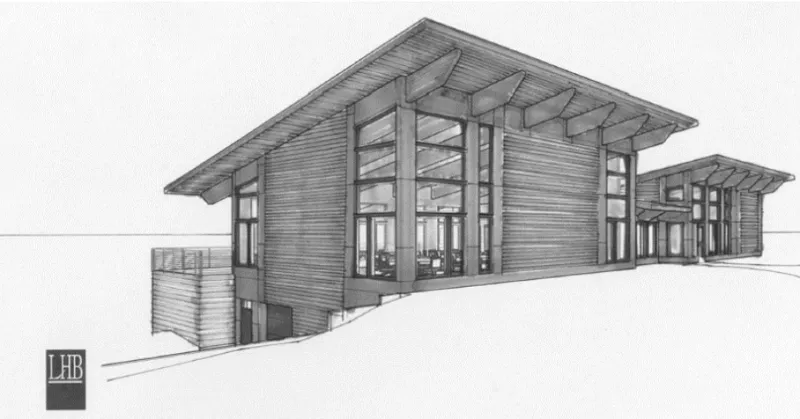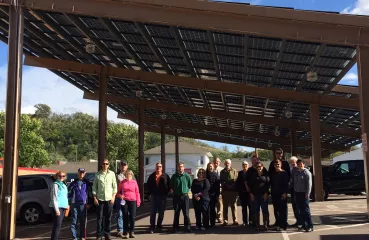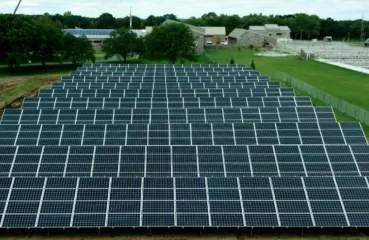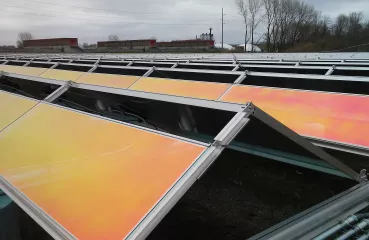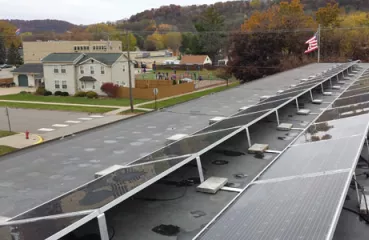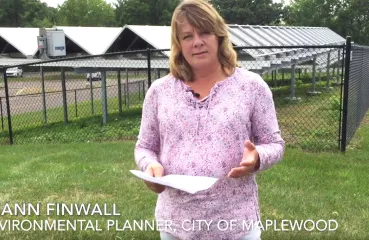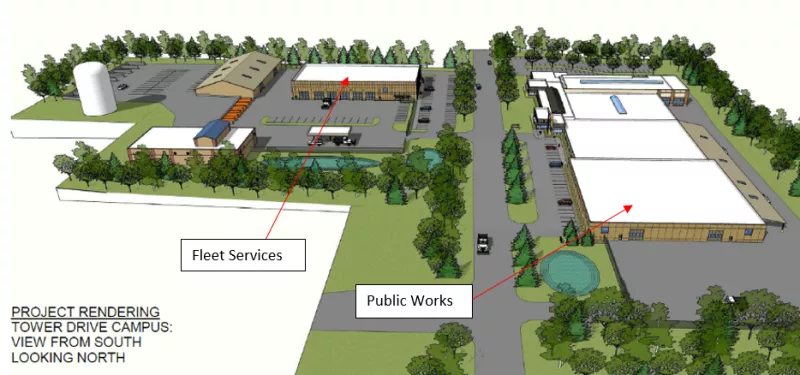
Image: Rendering of Woodbury Tower Drive projects. Courtesy of City of Woodbury and included in the Solar Possible RFP.
The Tower drive request featured a significant renovation to the existing public works building and a soon to-be-built solar-ready rooftop across the street at the Fleet Services building. These sites introduced a couple of unforeseen issues:
- A community solar garden subscription. The Public Works building had been subscribed to community solar gardens for 120% of its annual electricity consumption—the maximum subscription under Minnesota’s community solar garden legislation. This 120% also constrains the amount of on-site solar that Woodbury can install. Unless Woodbury were to grow its electricity consumption or transfer the subscription to a different facility, there would be little flexibility for the facility to host a commercial-sized solar array on the available roof spaces.
- No individual energy model per building. To size a solar array, vendors require a reliable number of kilowatt-hours consumed in a typical year. Xcel energy requires documentation that the array will not produce over 120% of the annual electricity consumption for its interconnection process. There was no way of knowing what the electricity consumption specifically might be for each building. The Solar Possible team and the City of Woodbury could not supply vendors with an accurate estimate of electricity consumption.
Currently, Woodbury has allocated 20% of the community solar garden subscription to another meter. Woodbury may still be able to host solar at the Public Works building pending more observed electricity consumption data.
Lesson learned: Requesting a bid for a to-be-built or to-be-renovated building is not inherently problematic, but it is more difficult. This solicitation could have been improved with specific, individual electricity models. Vendors did not know how large to bid the projects. The vendors were concerned about submitting a bid that would eventually be rejected by Xcel Energy over a breach of net metering regulations. In this case, the bid could have been improved with either a 12 months of observed electricity consumption (post building commissioning) or a specific electricity model for each building.
In Woodbury’s case, obtaining an energy model this late was cost prohibitive; we’d recommend seeking an energy model early on and pairing the results with a solar bid.


